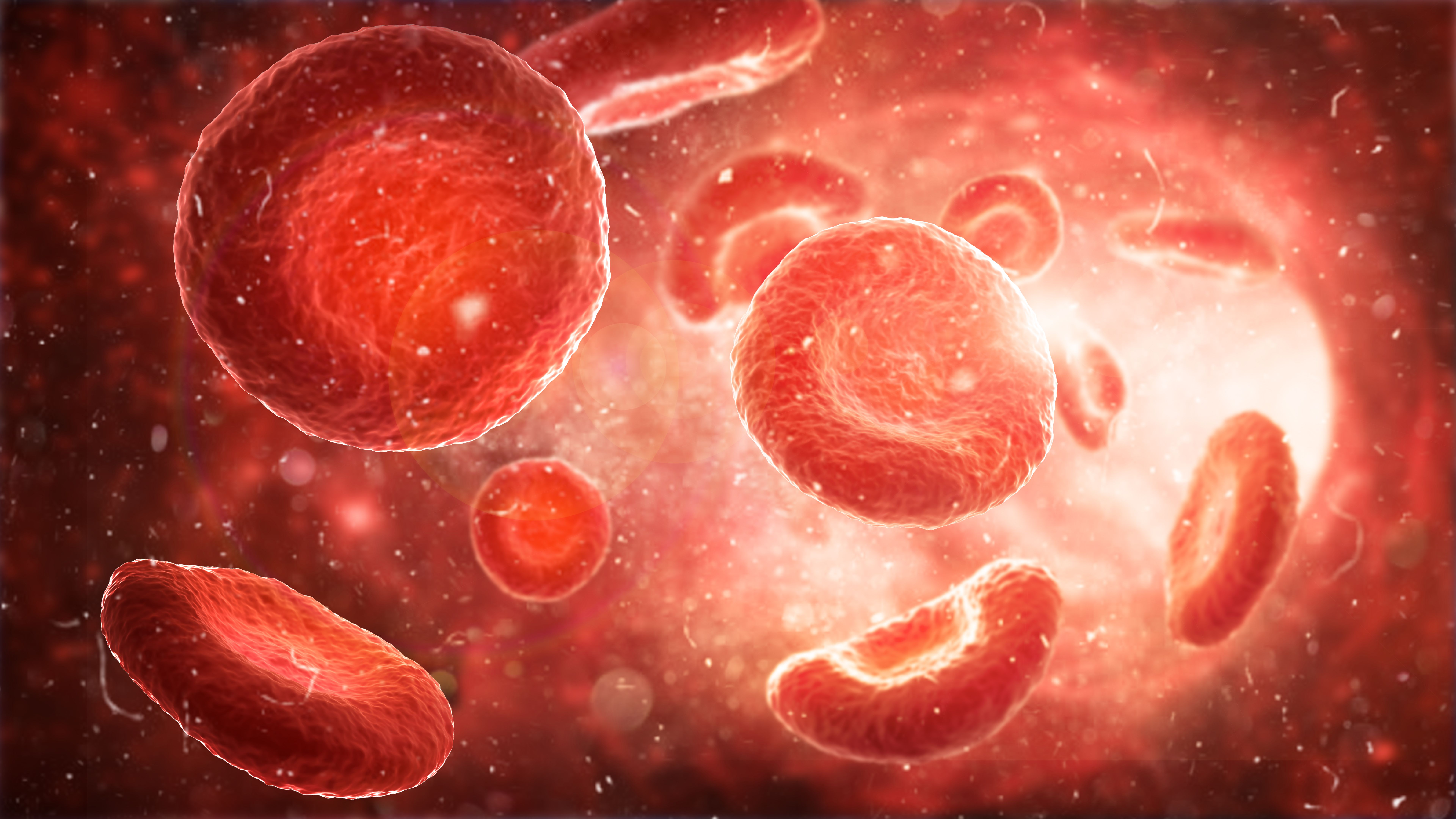NK Cell Response Mediated by CD38/48 Regulation With Daratumumab in Multiple Myeloma
Researchers identified KDM6A’s role in CD38 regulation and found that an EZH2 inhibitor could potentially reduce resistance to an anti-CD38 antibody in multiple myeloma cells.
Red blood cells: © vipman4 - stock.adobe.com

As part of research into overcoming daratumumab (Darzalex) resistance and improving outcomes in patients with multiple myeloma, tazemetostat (Tazverik) showed potential to imitate the KDM6A gene’s function in regulating the CD38 and CD48 genes, according to a 20th Annual International Myeloma Society (IMS) Meeting and Exposition presentation.1
Investigators showed KDM6A upregulated CD38 target cells and modulated natural killer (NK) cell activity via regulation of CD48 to assist daratumumab targeting and cytotoxicity, respectively. Tazemetostat, an EZH2 inhibitor approved by the FDA, increased CD38 and CD48 expression on mRNA and surface expression levels in KDM6A knockout cells. Furthermore, sensitivity to daratumumab-mediated NK cell cytotoxicity in KDM6A knockout cells was restored by tazemetostat.
“We are focused on the molecular mechanisms underlying the sensitivity of daratumumab treatment in multiple myeloma,” Jiye Liu, PhD, instructor in medicine at Dana-Farber Cancer Institute, said in his IMS presentation.
Daratumumab was the first FDA-approved anti-CD38 monoclonal antibody in multiple myeloma and has received multiple FDA approvals since for both monotherapy and combination regimens in patients with newly diagnosed or relapsed/refractory disease.1,2 The investigators looked at daratumumab’s mechanisms of action, including antibody-dependent cell-mediated cytotoxicity (ADCC), complement-dependent cytotoxicity, antibody-dependent cellular phagocytosis, and apoptosis to study the sensitivity of NK cell–mediated ADCC.1
A 2-cell type genome-scale CRISPR-Cas9 knockout screening was used to identify genes associated cytotoxicity from daratumumab, and in addition RNA sequencing was done in KDM6A knockout cells. This showed many genes were enriched after treatment with ADCC. Out of 411 genes positively selected in the NK screening and the 336 genes positively selected in the CD38-low screening, 22 overlapped.
The overlapped screenings showed KDM6A was the top gene, with KDM6A knockout causing a significant decrease in CD38 expression (>2 times, P < .01). Additionally, expression of CD38—which is most closely associated with daratumumab efficacy—and daratumumab-induced cytotoxicity were restored by re-introducing KDM6A to KDM6A knockout cells.
“The KDM6A [gene] belongs to the KDM6A family of histone 3 lysine 27 demethylase [H3K27me3] and the function of KDM6A is balance activated and repressed transcription together with EZH2 bi-regulated H3K27me3 level on the genes,” Liu said.
The investigators observed that when comparing the CD38 promoter area between KDM6A knockout and control cells using chromatin immunoprecipitation (ChIP) sequencing and ChIP quantitative real-time PCR (qPCR), the H3K27me3 level was higher in the KDM6A knockout cells. H3K27me3 levels were also decreased by the re-introduction of KDM6A to KDM6A knockout cells. This suggested that higher levels of H3K27me3 at the CD38 promoter and lower CD38 expression was present in daratumumab-resistant cell lines.
Sensitivity of KDM6A knockout cells to treatment with daratumumab was only partially restored by CD38 overexpression. When investigators looked at RNA sequencing in KDM6A knockout cells, there was downregulation in the NK-activated ligand CD48. There was a significant increase in the secretion of granzyme B and perforin by NK cells because of the CD48 overexpression in KDM6A knockout cells. This restored the activity of NK cells to daratumumab, as well as re-sensitizing KDM6A knockout cells.
By demethylating H3K27me3, KDM6A opposes the EZH2 gene in the PRC2 complex. Liu hypothesized by using an EZH2 inhibitor, such as tazemetostat, they could increase the H3K27me3 level and upregulate expression in CD38 and CD48. When KDM6A was treated with tazemetostat, the CD38 and CD48 protein level and mRNA level increased.
“The flow data showed that the surface expression of the CD38 and CD48 were increased by the EZH2 inhibitor, and also the ChIP qPCR showed H3K27me3 level on the CD38 and CD48 genes were inhibited by the EZH2 inhibitor,” Liu explained.
Tazemetostat also restored KDM6A knockout cells sensitivity to the ADCC therapy. EZH2 inhibition increased granzyme B secretion from the NK cells.
“Inactivation of KDM6A downregulated CD38 and CD48 expression through the H3K27me3 regulation. An EZH2 inhibitor can upregulate the CD38 and CD48 expression and enhance the daratumumab-mediated ADCC,” Liu concluded.
References:
Liu J. Epigenetic regulation of CD38/48 by KDM6A mediates NK cell response in multiple myeloma. Presented at: International Myeloma Society 20th Annual Meeting and Exposition; September 27-30, 2023; Athens, Greece. OA-46.
Raedler LA. Darzalex (daratumumab): first anti-cd38 monoclonal antibody approved for patients with relapsed multiple myeloma. Am Health Drug Benefits. 2016;9(Spec Feature):70-73.